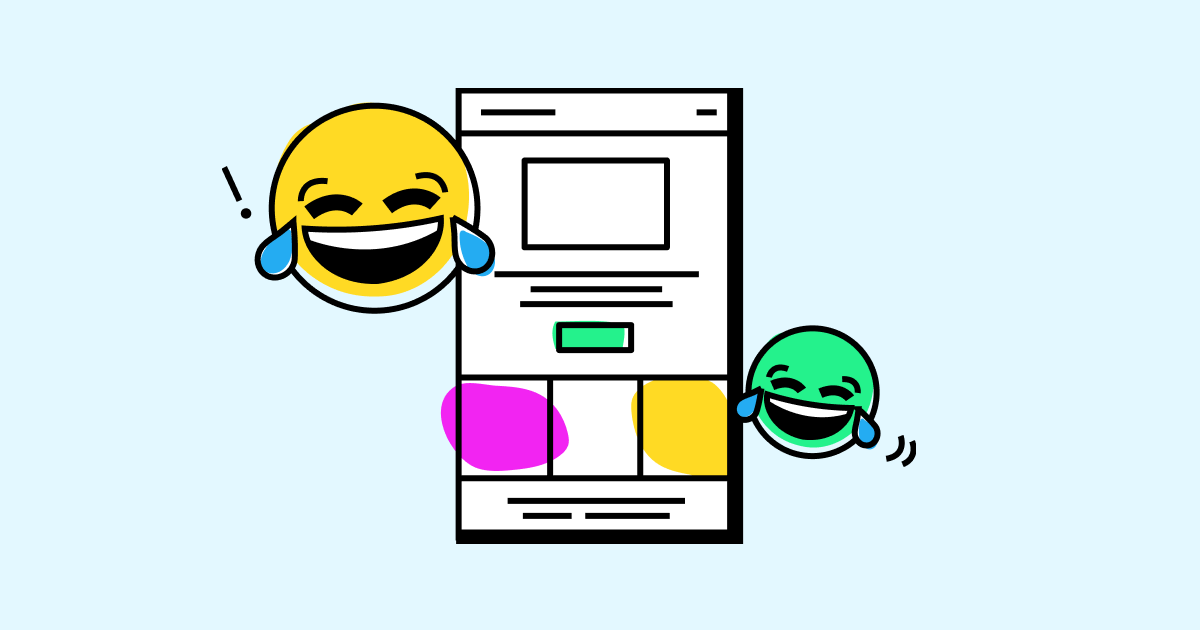
How do I know my Magento theme?
What are the ways to identify your Magento theme? Can it impact your ecommerce store performance? Are you fully utilizing your Magento theme features? These questions often pop up when you are operating an ecommerce store on Magento. It’s vital not only to understand the quality, but also how to identify your Magento theme so that you can fully utilize its features and capabilities to enhance your ecommerce performance.
Many Magento users face challenges in identifying their theme, as confirmed by prominent sources such as Magento’s community forums and Stack Overflow. The issue stems from confusion and lack of clarity within the platform itself, leading users to miss key features beneficial to their online store’s performance and functionality. Studies and surveys in the United States have shown online retailers often face similar challenges, emphasizing the need for clear instructions and guidance on Magento theme identification.
In this article, you will learn practical methods and tips to know your Magento theme. It’s designed to help you understand your current Magento theme, its unique features, and how it contributes to enhancing your ecommerce store’s efficiency. This articles ensures that you understand how to fully utilize your theme, leading to improved performance and user experience.
Furthermore, by the end of the tutorial, you’ll be equipped with the knowledge to troubleshoot potential issues that may arise from the theme, giving you more control and confidence when operating your Magento store. Empower yourself with the knowledge you need to make the most of your Magento theme and watch your online store thrive.

Key Definitions and Meaning of Magento Theme?
A Magento theme refers to the design or appearance of your eCommerce website that runs on the Magento platform. It consists of a combination of custom templates, styles or images defined within a specific directory of the Magento application. The theme can change the visual aesthetics and layout of your website without altering its core functionalities.
Knowing your Magento theme means identifying the specific name or type of theme your online store operates on. This knowledge is essential as it helps you understand the layout, functionality, and overall look and feel of your website. Moreover, it can guide you in managing updates, choosing compatible extensions, or making customizations on your site.
Unveiling your Magento Theme: A Closer Look into the Core
Exploring the Magento Theme Configuration
The first step to unveiling your Magento theme is through the administration panel. Begin with logging into your admin section and heading over to “Content” > “Design” > “Configuration.” Here, a list of all the available store views will come into sight. Click on ‘edit’ corresponding to the store view for which you wish to explore the theme. In the ‘Design Theme’ drop-down, the currently active theme for that particular store view will be marked. It’s crucial to understand this selection directly affects your storefront’s appearance and essentially the user experience it delivers.
Navigating Through the Magento File Structure
The second avenue to explore your Magento theme lies in your Magento file structure. Access your Magento root directory via FTP or file manager and navigate to ‘app’ > ‘design’ > ‘frontend.’ Under this, you will find all installed themes for your Magento store, including the active and inactive ones. For instance, if your directory shows ‘default’ and ‘modern’ folders, it means you have these two themes installed. Each theme’s sub-directory, usually named ‘layout,’ ‘template,’ or ‘locale,’ contains various files that define the specific theme’s layout and looks.
- ‘Layout’: This directory contains XML files that define block structure for different pages.
- ‘Template’: PHP phtml files that generate block’s HTML output are found here.
- ‘Locale’: This contains the translation CSV files.
The active theme of your Magento store comprises of a combination of these settings. The theme’s constituents can be determined right down to individual display elements, offering fine-grained control over your online store’s presentation and functionality. Gaining a greater understanding of these elements will assist you in modifying your store’s look and feel directly from the file system.
Please note that the aforementioned instructions are general and might slightly differ based on the version of Magento you are using. Also, changing the theme or making modifications to it should ideally be done during the development phase or during low traffic hours. This is to ensure any changes made do not adversely affect your store’s performance or the user experience. If you are unclear about any part of the process, it is advisable to seek assistance from a Magento professional to avoid potential mishaps.
Navigating the Magento Sea: Identifying and Understanding your Theme
Unveiling the Identity of Your Magento Theme
Is it possible that you’re sailing through the Magento sea, navigating through its intricate waves but you’re unaware of the identity of your theme? Magento, a strong and versatile eCommerce platform has an assortment of themes that not only boosts the appearance of your online store but also optimises user experience. Knowing your theme doesn’t necessarily mean recognising its visual manifestation, it is about comprehending its underlying structure and the array of features it provides. Utilising the theme’s distinctive design and customisation features could truly provide a powerful wind in your sails to journey colorfully and seamlessly on the Magento sea.
Unlocking the Conundrum
The pivotal issue often faced by Magento store owners or developers is distinguishing the theme your store is running. This fact can be veiled from view as Magento doesn’t show it directly on the admin dashboard. With so many freely available and custom-made themes, recognising the applied theme may seem quite a challenging task. More often than not, the theme’s title is either way too complicated or too obscure that its identity gets steered into the deep sea of confusion.
To uncomplicate this, take note of the name seen when you go to ‘Content’ and them ‘Configuration’ in your Magento admin panel. The Theme column will display the currently active theme on your website. Identifying the theme from the frontend can be a bit tricky and generally needs some coding proficiency. You could even view the source code and locate the theme’s name in the styles.css file path.
Paddling the Right Way: Best Practices to Keep in Mind
The Magento theme forms the bedrock of your online store’s aesthetics and functionality. Hence adopting best practices while identifying and working with it proves beneficial. Always remember the name of your theme. Use the ‘Design Configuration’ in your admin panel to check the name. Dealing with several themes? Simply organise and manage them via the ‘themes’ page.
You also need to be aware that Magento uses a fallback system. That means if a file or element is not found in your current theme, Magento will look for it in the parent theme, then the grandparent theme, and so on. This can sometimes create confusion when trying to identify which theme a particular page element comes from. Hence, understanding this fallback logic will go a long way in managing your themes effectively.
Lastly, if you’re using a custom theme, ensure throughout updates, the developer left breadcrumbs (comments or documentation) you can hunt down to dissect its components. With these surefire practices, you can take the helm confidently and navigate through the Magento sea skillfully.
Magento Theme Mastery: A Comprehensive Guide to Discovering your Theme’s Identity
Unlocking the identity of your Magento theme
Have you ever wondered how to determine which Magento theme your e-commerce website uses? Why does it matter, you may ask. A theme is the fundamental constituent of your website’s appearance, playing a vital role in the user interface, customer experience, and ultimately online sale conversions. Knowing your theme aids in troubleshooting, customization, and optimization. Moreover, it helps ascertain compatibility with third-party extensions, thus avoiding potential conflicts and glitches.
To find out your Magento theme, navigate to the admin dashboard. From the side menu, go to ‘Content’ then ‘Design’ and finally ‘Configuration’. In this section, you can view the themes used for different store views. Click on ‘Edit’ for the specific store view you want to inspect. Under the ‘Applied Theme’ drop-down, you will see the theme your e-commerce store currently uses.
Understanding common issues related to Magento themes
No tool is perfect, and it’s indeed the case with Magento themes. Recognizing the most prevalent issues will pave the way for more effective problem-solving. A common hurdle faced by many users is theme conflict, especially when multiple themes and extensions don’t play well together. It can result in the store malfunctioning or subtle errors in the layout and styling. Other major problems comprise sluggish theme loading times that can deter potential customers and negatively impact SEO ranking. Also, the lack of customization options in some themes restrains businesses from providing a unique customer experience.
A curious Magento user might be perturbed by a theme not updating after changes have been made. Such an issue can stem from caching mechanisms, which store a pre-rendered version of your website to enhance loading times. While it serves well for performance, it can cause recent changes not to immediately reflect on the site.
Examples of effective use of Magento themes
Finding a balance between beautiful visuals and optimized performance is the key to efficient use of Magento themes. Renowned brands have successfully leveraged Magento themes to establish a robust e-commerce platform.
The popular fashion brand ‘Monin’ uses the ‘Ultimo’ Magento theme, valued for its fluid responsiveness and customization scope. The website showcases high-quality product images against subtle backgrounds, embodying a minimalist design trend. The theme’s inherent versatility enables ‘Monin’ to keep the site visually engaging without sacrificing load speed or user experience.
‘Ford’, one of the biggest car manufacturers, employs the ‘Athlete’ Magento theme for its accessories store. Recognized for its seamless navigation and clean layout, the theme truly complements Ford’s website, remarkably enhancing product discoverability. Highlighting the versatility of Magento themes, ‘Ford’ is an excellent example of using the theme capabilities to match the brand’s prestige and aesthetic appeal.
Conclusion
Could you imagine a website without a particular style or theme? A website’s theme is essential as it not only attracts users but also gives the site a professional look. Determining your Magento theme may seem challenging initially, but once you understand the process – identifying the current theme in the Magento configuration settings – it becomes uncomplicated. Undeniably, your Magento theme plays a critical role in shaping your visitors’ user experience, impacting your site’s performance and your overall online reputation.
Understanding the need for subscribers is crucial in managing a successful blog. You are all invited to join our ever-growing community, learn, and share your journey in the blogosphere. Subscribing to our blog will not only expose you to a barrage of information, insights and experiences of Magento theme identification and usage, it will also ensure you are abreast with our upcoming releases.
While preparing for new releases may sound tiresome and long, we assure you that the wait is worthwhile! Our team is dedicated to providing you with the latest and the most authentic information. Therefore, while we truly appreciate your eagerness for our upcoming content, we want to deliver the best to you, and it is for this very reason we ask for your patience. Our subsequent releases are planned meticulously as we leave no stone unturned in providing essential and interesting information. Stay connected, stay informed, and see what we have in store for you on this exciting journey together.
F.A.Q.
To find the theme your Magento site is using, you need to log in to your Magento admin panel. Navigate to ‘Content’, then ‘Design’, and click on ‘Configuration’, the default theme applied to your website will be listed there.
2. Can I use multiple themes on my Magento store?
Yes, Magento allows you to apply multiple themes for different store views. This feature is useful when you want to change the look of your store for special events, seasons, or for different types of users.
3. How do I change my Magento theme?
To change your theme in Magento, in your admin panel, navigate to Content, then Design, and click on Configuration. Here, you can change your theme under the ‘Applied Theme’ column by selecting a new theme from the drop-down list.
4. What should I do if my Magento theme is not working correctly?
If your theme isn’t working correctly, try clearing your cache first – navigate to System, then Tools, and then Cache Management and flush Magento caches. If problems persist, contact the theme developer or seek help from the Magento Community.
5. How can I customize my Magento theme?
To customize your Magento theme, go to ‘Content’, and then ‘Themes’ under the ‘Design’ section. Then, you will see a list of themes available; choose your active theme and you can begin customizing it according to your business needs.












